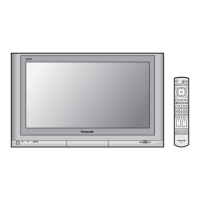
Do you have a question about the Panasonic TH-37PV500B and is the answer not in the manual?
Covers accessory compatibility, proper placement, and ventilation requirements for safe operation.
Details electrical safety, mains plug handling, and general precautions during TV use.
Lists remote control, batteries, cables, and ferrite cores provided with the TV.
Instructions for attaching ferrite cores to cables and fitting remote control batteries correctly.
Provides guidance on securing cables using covers and bands for tidy installation.
Step-by-step instructions on how to open the TV's front panel.
Guides users through connecting the TV and performing initial setup options.
Details the process of auto setup for DVB and Analogue stations for channel tuning.
Explains how to download program information to compatible recording devices.
Guides users on entering personal details and security codes for owner identification.
Explains how to use the GUIDE button to access channel lists and program information.
Provides a comprehensive overview of the remote control buttons and their functions.
Details navigating on-screen menus using remote buttons and using the on-screen help box.
Explains the different screen settings: Dynamic, Normal, Cinema, and Auto.
Covers adjustments for contrast, brightness, colour, sharpness, tint, and colour balance.
Guides on adjusting audio levels, speaker balance, and headphone output volume.
Explains stereo sound, sound modes, spatial effects, and HDMI audio settings.
Details device communication via Q-Link and selecting AV output sources.
Covers off-timer, teletext modes, side panel display, and power save options.
Includes power preference, tuning menu, DVB setup, owner ID, and shipping condition.
Guides users on customizing the channel list by adding, deleting, or moving programmes.
Explains how to perform automatic channel scans and fine-tune individual channels.
Provides steps for adding, deleting, and moving channels within the programme list.
Covers renaming channels, locking them for access control, and copying info to recorders.
Details the process for retuning the TV to receive local analogue stations.
Explains how to tune channels using both the remote control and front panel buttons.
Guides on setting the security code (PIN) and entering owner details for identification.
Explains how to use the shipping condition to reset the TV to its original settings.
Details setting recording timers and selecting favourite channels for profiles.
Covers locking channels with a PIN and accessing DVB tuning features.
Explains specialized DVB options and selecting alternative sound tracks.
Guides on programming DVB recordings, including date, time, and programme selection.
Explains how to enable/disable timer recording and set programme frequency (daily, weekly).
Provides instructions for adding and editing channels in user-defined profile lists.
Details setting up a PIN and locking/unlocking specific DVB channels.
Covers retuning DVB channels and adding new services to the channel list.
Explains service notifications and checking DVB signal strength.
Guides on accessing CI module features and setting preferred subtitle language.
Covers downloading new software and adjusting the information banner duration.
Provides step-by-step instructions for inserting and removing CI modules.
Details automatic and manual methods for updating the TV's software.
Explains choosing EPG display styles and navigating channel and program listings.
Guides on viewing program details and setting timers via the EPG.
Describes displaying channel and program details using information banners.
Explains how to enable and disable subtitles for DVB broadcasts.
Details how Q-Link enables communication with compatible VCR/DVD recorders.
Explains the function for immediate recording of the currently viewed program.
Guides on using the ASPECT button and Panasonic Auto for aspect ratio adjustments.
Explains the different aspect ratio options available on the TV.
Details specific modes like 16:9, 14:9, Just, 4:3, and Zoom for picture display.
Explains how to freeze the picture for closer viewing or analysis.
Guides on using multi-window features like picture-in-picture and picture-and-picture.
Covers viewing mode, contrast, colour adjustments, and advanced settings in PC mode.
Details PC input setup for resolution, clock, H-pos, V-pos, and sync synchronization.
Provides procedures for inserting and removing SD and PC memory cards.
Offers safety guidelines and precautions for handling memory cards and data.
Lists compatible file formats for JPEG still images and MPEG4 moving pictures.
Explains typical folder structures and naming conventions for memory cards.
Guides users on initiating and managing recordings to an SD card.
Presents a table detailing recording times based on SD card size and quality.
Explains how to play back moving pictures (MPEG4) recorded on SD cards.
Guides users on displaying still images (JPEG) recorded on memory cards.
Details functions like pause, play, skip, stop, and volume adjustment during playback.
Covers locking, unlocking, and deleting files directly from the playback interface.
Explains how to adjust frame size and repeat modes for media playback.
Guides on viewing single photos and setting up slide shows.
Details slide show interval settings and repeat modes for photo viewing.
Covers selecting recording modes (Rec mode) and setting recording time (Rec time).
Explains how to format cards and check remaining memory space.
Provides explanations and solutions for common error messages related to memory cards.
Details how the TV remote can operate selected Panasonic VCR and DVD equipment.
Covers contrast, volume, page selection, List, and FASTEXT modes.
Explains how to store favourite pages and manage pages in List mode.
Guides on handling teletext updates and news flash alerts.
Provides instructions for navigating multi-page teletext content.
Explains features and navigation methods specific to DVB teletext.
Guides on connecting headphones, AV3 devices, and general connection advice.
Details connecting audio systems and various devices via AV1, AV2, AV4 Scart terminals.
Explains how to connect devices using component input for progressive/HD signals.
Guides on connecting digital audio/video sources like Set Top Boxes or DVD players via HDMI.
Details how to connect a computer using the PC input terminal for display.
Helps diagnose and resolve common picture, sound, and general TV operation issues.
Addresses potential screen retention (after-images) and the sleep timer function.
Guides on troubleshooting problems related to receiving DVB channels.
Helps diagnose issues caused by poor signal quality and interference on DVB channels.
Provides pin assignments and usage information for Scart and S-Video terminals.
Lists supported signal formats for PC, HDMI, and Component inputs.
Presents specifications including power, dimensions, weight, and panel characteristics.
Provides contact information for customer care and accessory ordering.
Offers information on the environmentally responsible disposal of electrical and electronic equipment.

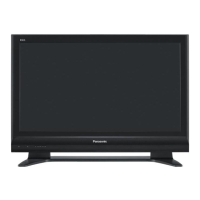


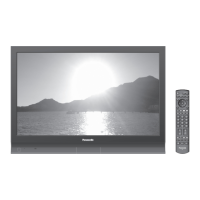
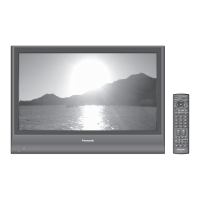
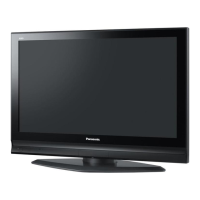


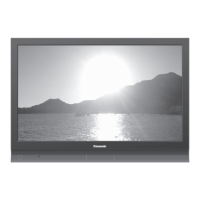
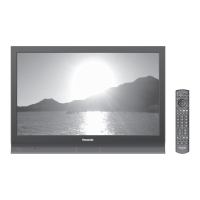

